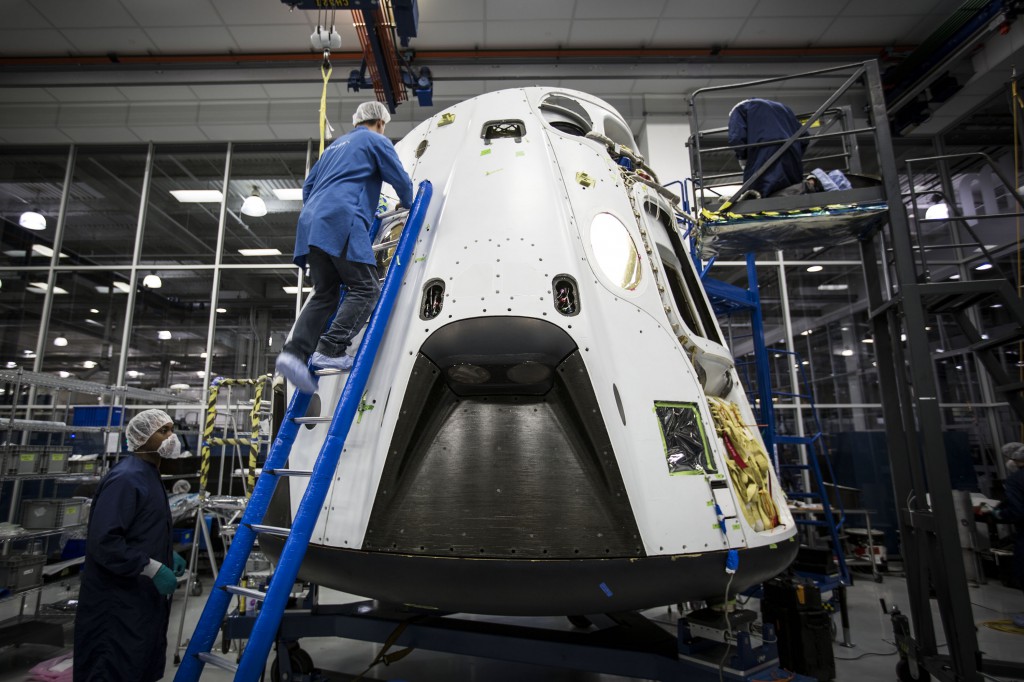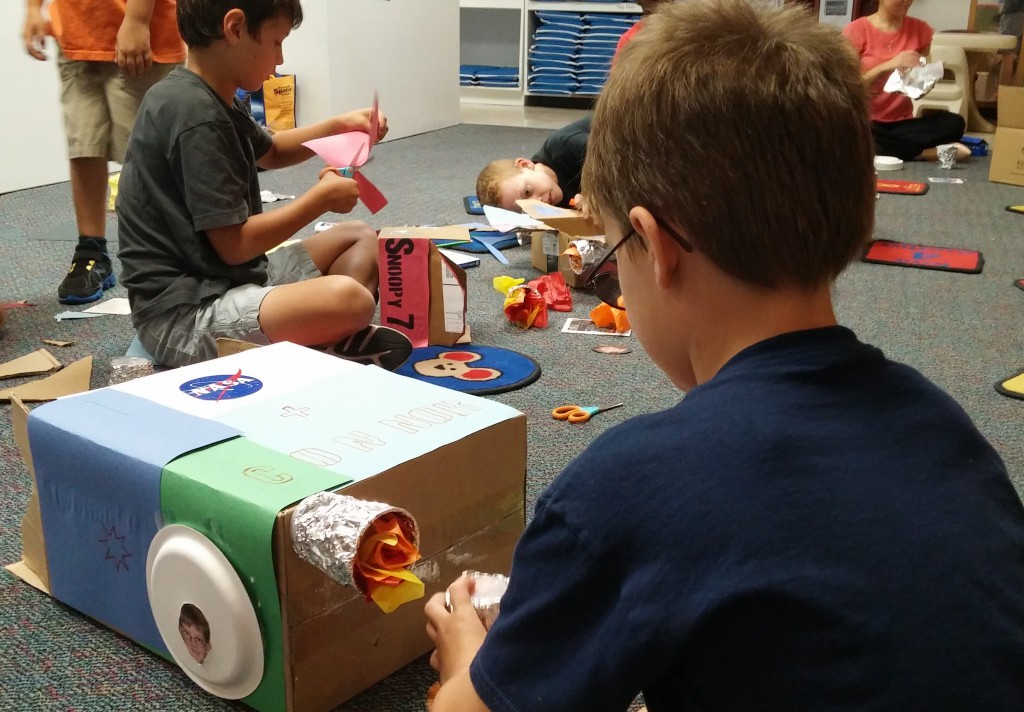 “Sometimes when you are an engineer, you have to get it wrong, before you can get it right,” said Rebecca Regan, an employee at NASA’s Kennedy Space Center.
“Sometimes when you are an engineer, you have to get it wrong, before you can get it right,” said Rebecca Regan, an employee at NASA’s Kennedy Space Center.
Yesterday, Regan taught 17 elementary school students at Kennedy’s Child Development Center about the Commercial Crew Program and the need to have American-made spacecraft and rocket systems to carry people to and from space. After the lesson, each student built their own spacecraft out of cardboard boxes and art supplies.
Take a look at the designs these budding engineers created.



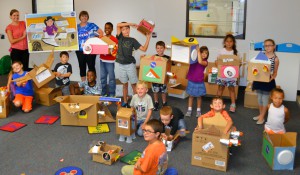
Want to build your own spacecraft this summer? We used the following supplies:
- Cardboard box
- Disposable plates (for portholes)
- Pictures (to place on the portholes)
- Plastic cups (to make rocket engines)
- Foil (to cover the cups)
- Tissue Paper – red, orange and yellow (to make fire for the engines)
- Construction Paper (for decorating)
- Stencils (for decorating)
- Pencil (for a steering wheel)
- Tape
- Glue
- Scissors
- NASA and Commercial Crew Program logos
 Also, don’t forget to check out the NASA exhibits at Essence Fest and the Audubon Institute’s Aquarium if you are in New Orleans this weekend.
Also, don’t forget to check out the NASA exhibits at Essence Fest and the Audubon Institute’s Aquarium if you are in New Orleans this weekend.



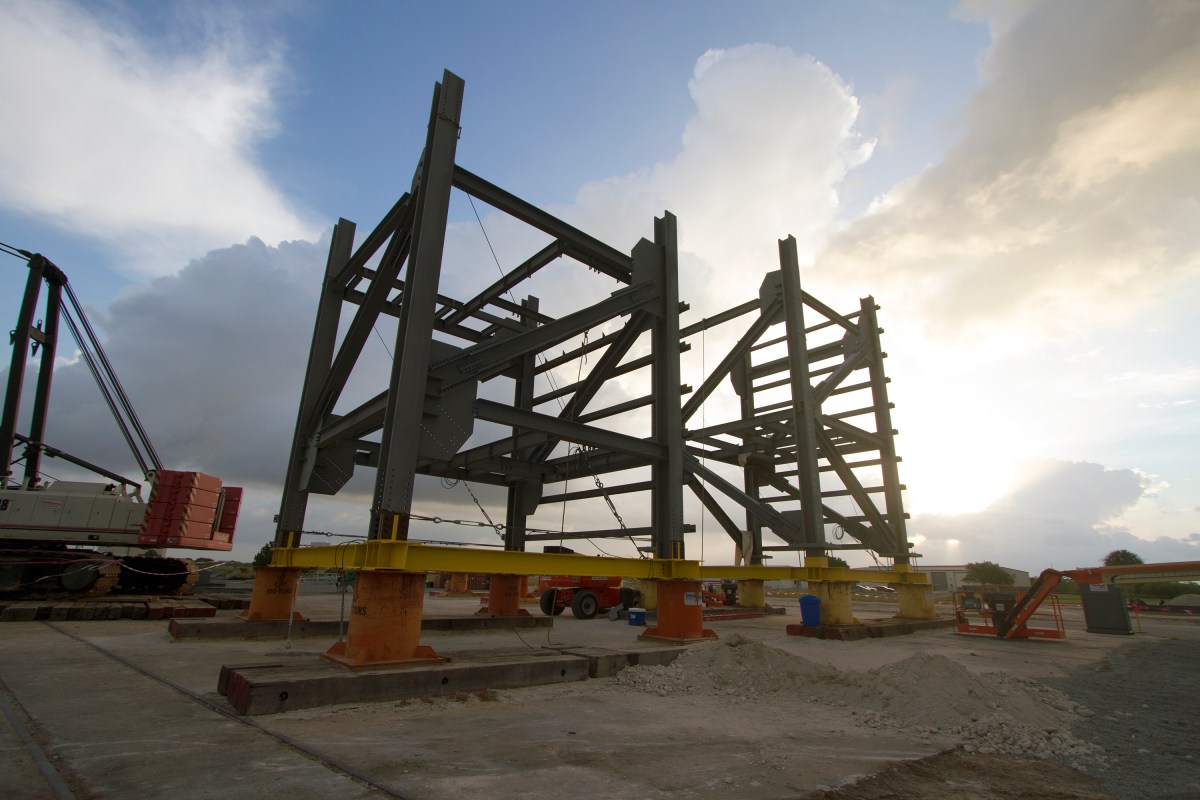

 “Sometimes when you are an engineer, you have to get it wrong, before you can get it right,” said Rebecca Regan, an employee at NASA’s Kennedy Space Center.
“Sometimes when you are an engineer, you have to get it wrong, before you can get it right,” said Rebecca Regan, an employee at NASA’s Kennedy Space Center.



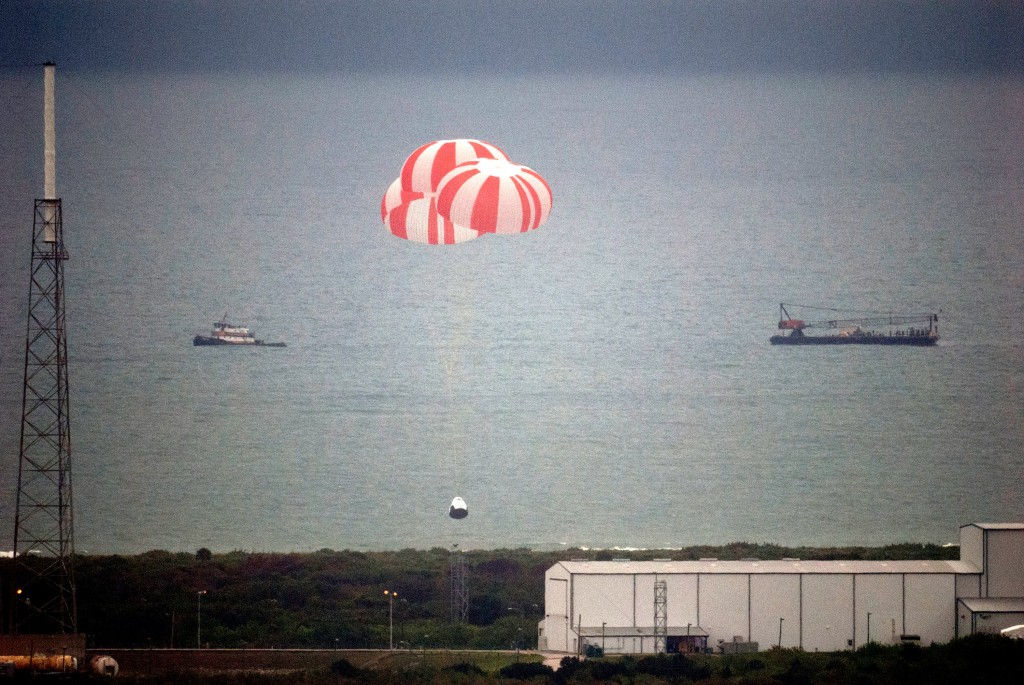
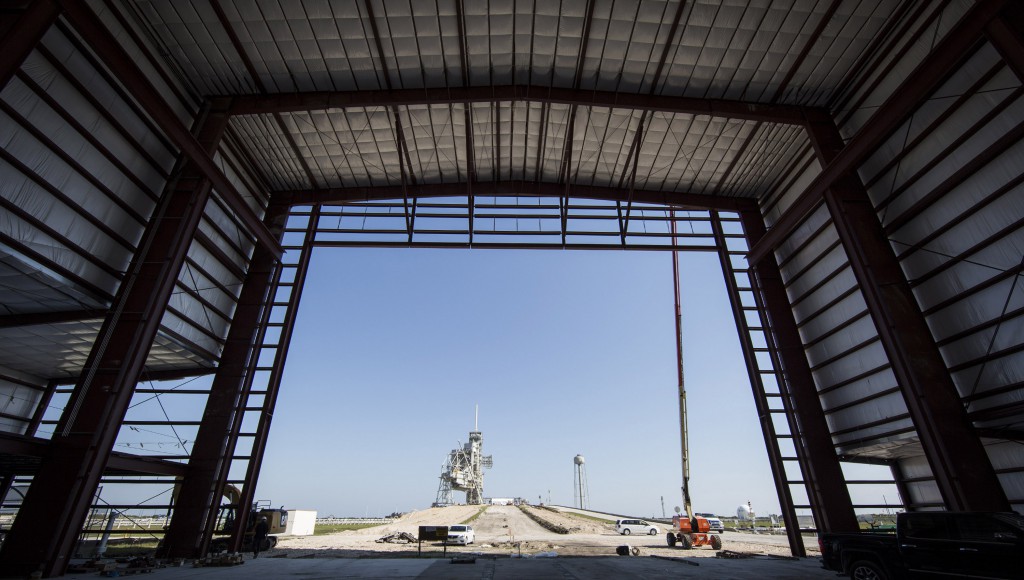
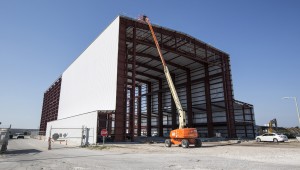 ecome SpaceX’s new 300-foot-long horizontal hangar at the base of Kennedy Space Center’s Launch Pad 39A. Inside, the company will process the Crew Dragon spacecraft and Falcon 9 v1.1 rocket before being rolled out for launch. The company also is refurbishing the historic complex for Commercial Crew and Falcon Heavy launches.
ecome SpaceX’s new 300-foot-long horizontal hangar at the base of Kennedy Space Center’s Launch Pad 39A. Inside, the company will process the Crew Dragon spacecraft and Falcon 9 v1.1 rocket before being rolled out for launch. The company also is refurbishing the historic complex for Commercial Crew and Falcon Heavy launches.
